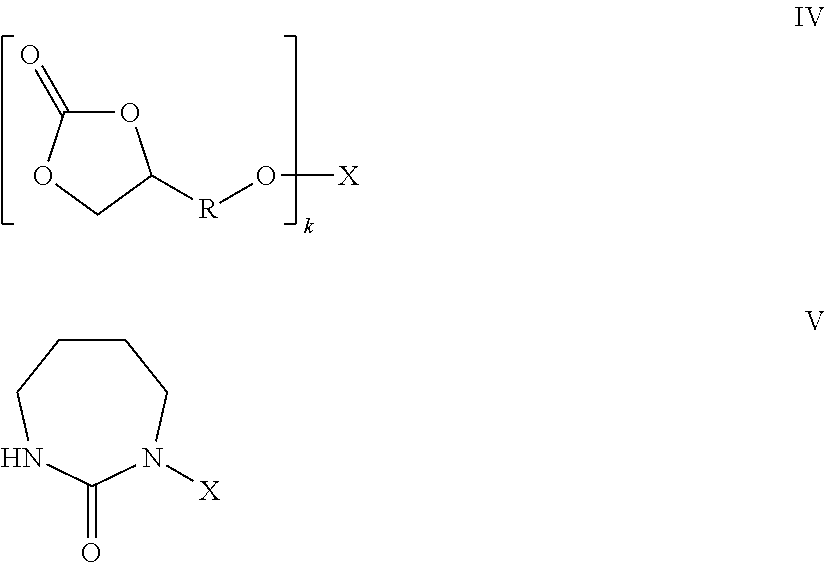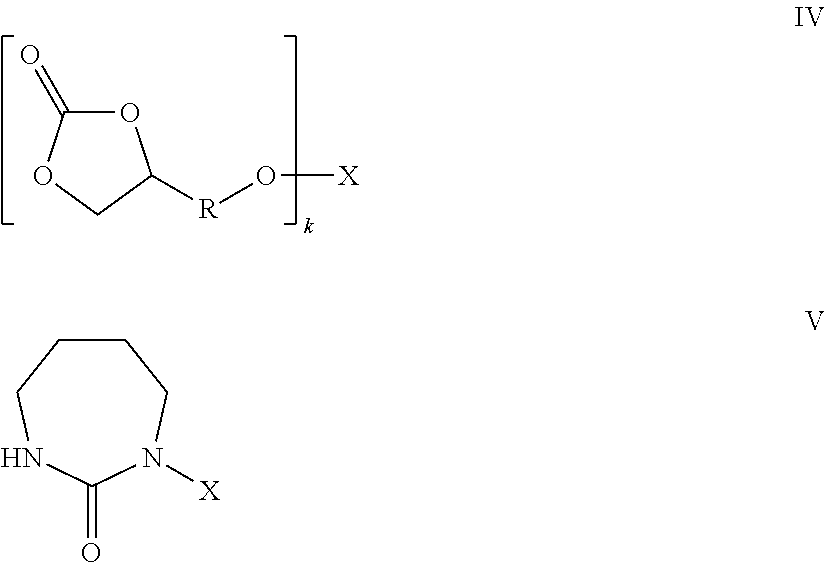Product for treating hard surfaces
a technology for treating agents and hard surfaces, applied in the direction of liquid soaps, detergent compounding agents, liquid soaps, etc., can solve the problems of difficult cleaning, complicated methods, and less easily soiled or cleaned surfaces,
- Summary
- Abstract
- Description
- Claims
- Application Information
AI Technical Summary
Benefits of technology
Problems solved by technology
Method used
Image
Examples
Embodiment Construction
[0015]The present invention accordingly provides the use of one or more polycarbonate-, polyurethane- and / or polyurea-polyorganosiloxane compounds containing at least one structural element of Formula (I):
-Y-A-(C═O)-A- (I),
each A being independently selected from S, O and NR1,
Y being selected from di- to polyvalent, in particular tetravalent, straight-chain, cyclic or branched, saturated, unsaturated or aromatic, substituted or unsubstituted hydrocarbon residues with up to 1000 carbon atoms (the carbon atoms of an optionally present polyorganosiloxane unit not being included in said number), which may contain one or more groups selected from —O—, —(CO)—, —NH—, —NR2—, —(N+R2R3)— and a polyorganosiloxane unit with 2 to 1000 silicon atoms,
R1 being hydrogen or a straight-chain, cyclic or branched, saturated, unsaturated or aromatic hydrocarbon residue with up to 40 carbon atoms, which may contain one or more groups selected from —O—, —(CO)—, —NH— and —NR2—,
R2 being a straight-chain, cy...
PUM
| Property | Measurement | Unit |
|---|---|---|
| temperature | aaaaa | aaaaa |
| adhesion | aaaaa | aaaaa |
| cleaning power | aaaaa | aaaaa |
Abstract
Description
Claims
Application Information
 Login to View More
Login to View More - R&D
- Intellectual Property
- Life Sciences
- Materials
- Tech Scout
- Unparalleled Data Quality
- Higher Quality Content
- 60% Fewer Hallucinations
Browse by: Latest US Patents, China's latest patents, Technical Efficacy Thesaurus, Application Domain, Technology Topic, Popular Technical Reports.
© 2025 PatSnap. All rights reserved.Legal|Privacy policy|Modern Slavery Act Transparency Statement|Sitemap|About US| Contact US: help@patsnap.com


